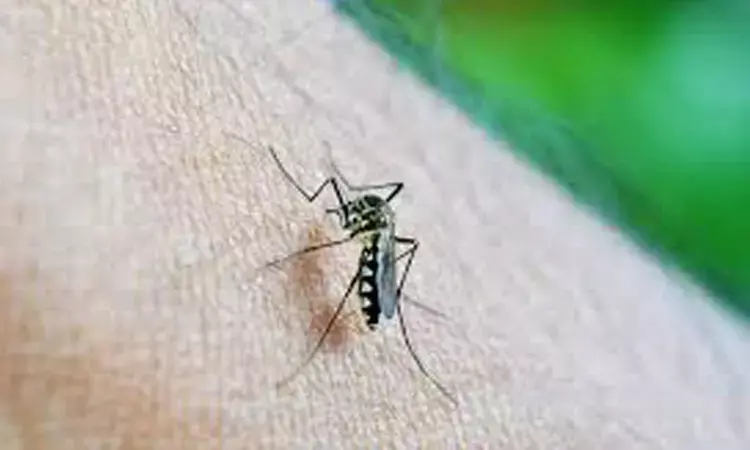- Home
- Medical news & Guidelines
- Anesthesiology
- Cardiology and CTVS
- Critical Care
- Dentistry
- Dermatology
- Diabetes and Endocrinology
- ENT
- Gastroenterology
- Medicine
- Nephrology
- Neurology
- Obstretics-Gynaecology
- Oncology
- Ophthalmology
- Orthopaedics
- Pediatrics-Neonatology
- Psychiatry
- Pulmonology
- Radiology
- Surgery
- Urology
- Laboratory Medicine
- Diet
- Nursing
- Paramedical
- Physiotherapy
- Health news
- Fact Check
- Bone Health Fact Check
- Brain Health Fact Check
- Cancer Related Fact Check
- Child Care Fact Check
- Dental and oral health fact check
- Diabetes and metabolic health fact check
- Diet and Nutrition Fact Check
- Eye and ENT Care Fact Check
- Fitness fact check
- Gut health fact check
- Heart health fact check
- Kidney health fact check
- Medical education fact check
- Men's health fact check
- Respiratory fact check
- Skin and hair care fact check
- Vaccine and Immunization fact check
- Women's health fact check
- AYUSH
- State News
- Andaman and Nicobar Islands
- Andhra Pradesh
- Arunachal Pradesh
- Assam
- Bihar
- Chandigarh
- Chattisgarh
- Dadra and Nagar Haveli
- Daman and Diu
- Delhi
- Goa
- Gujarat
- Haryana
- Himachal Pradesh
- Jammu & Kashmir
- Jharkhand
- Karnataka
- Kerala
- Ladakh
- Lakshadweep
- Madhya Pradesh
- Maharashtra
- Manipur
- Meghalaya
- Mizoram
- Nagaland
- Odisha
- Puducherry
- Punjab
- Rajasthan
- Sikkim
- Tamil Nadu
- Telangana
- Tripura
- Uttar Pradesh
- Uttrakhand
- West Bengal
- Medical Education
- Industry
NICE guidelines on antimicrobial prescribing in insect bites and stings

National institute of Health and care excellence (NICE) has released guidelines on antimicrobial prescribing in insect bites and stings.
Most insect bites and stings can be treated at home with simple first aid, with advice from a community pharmacist. are unlikely to be involved even when, rarely, symptoms may last for up to 10 days. This is because secondary bacterial infection is rare. Main recommendations include-
a rapid-onset skin reaction from an insect bite or sting is likely to be an inflammatory or allergic reaction, rather than an infection
most insect bites or stings will not need antibiotics.
2 Assess the type and severity of the insect bite or stings to identify:
a local inflammatory or allergic skin reaction
erythema migrans (bullseye rash), a sign of Lyme disease (see the NICE guideline on Lyme disease)
symptoms or signs of an infection
a systemic reaction (see the recommendations on referral and seeking specialist advice).
3 Advise people with an insect bite or sting that:
a community pharmacist can advise about self‑care treatments
skin redness and itching are common and may last for up to 10 days
avoiding scratching may reduce inflammation and the risk of infection
they should seek medical help if symptoms worsen rapidly or significantly at any time, or they become systemically unwell.
4 For people with a known or suspected tick bite, follow the NICE guideline on Lyme disease.
Treating a local inflammatory or allergic skin reaction
5 Do not offer an antibiotic for an insect bite or sting in people who do not have symptoms or signs of an infection.
6 Be aware that people may wish to consider oral antihistamines (in people aged over 1 year) to help relieve itching, even though there is uncertainty about their effectiveness in managing insect bites or stings. Some antihistamines cause sedation, which may help at night.
Treating an infected insect bite or sting
7 For people with an insect bite or sting who have symptoms or signs of an infection, see the recommendations on choice of antibiotic in the NICE guideline on cellulitis and erysipelas.
For a short explanation of why the committee made these recommendations, see the rationale section on treatment .
For more details, see the summary of the evidence.
Reassessment
8 Reassess people with an insect bite or sting if:
symptoms or signs of an infection develop (see the NICE guideline on cellulitis and erysipelas)
their condition worsens rapidly or significantly, or they become systemically unwell
they have severe pain out of proportion to the wound, which may indicate the presence of toxin‑producing bacteria.
9 When reassessing people with an insect bite or sting, take account of other possible diagnoses such as Lyme disease (see the NICE guideline on Lyme disease).
Referral and seeking specialist advice
10 Refer people with an insect bite or sting to hospital if they have symptoms or signs suggesting a more serious illness or condition, such as a systemic allergic reaction (see the NICE guideline on anaphylaxis).
11 Consider referral or seeking specialist advice for people with an insect bite or sting if:
they are systemically unwell
they are severely immunocompromised, and have symptoms or signs of an infection
they have had a previous systemic allergic reaction to the same type of bite or sting
it is in the mouth or throat, or around the eyes
it has been caused by an unusual or exotic insect
they have fever or persisting lesions associated with a bite or sting that occurred while travelling outside the UK.
https://www.nice.org.uk/guidance/ng182/chapter/Recommendations
Hina Zahid Joined Medical Dialogue in 2017 with a passion to work as a Reporter. She coordinates with various national and international journals and association and covers all the stories related to Medical guidelines, Medical Journals, rare medical surgeries as well as all the updates in the medical field. Email: editorial@medicaldialogues.in. Contact no. 011-43720751
Dr Kamal Kant Kohli-MBBS, DTCD- a chest specialist with more than 30 years of practice and a flair for writing clinical articles, Dr Kamal Kant Kohli joined Medical Dialogues as a Chief Editor of Medical News. Besides writing articles, as an editor, he proofreads and verifies all the medical content published on Medical Dialogues including those coming from journals, studies,medical conferences,guidelines etc. Email: drkohli@medicaldialogues.in. Contact no. 011-43720751


